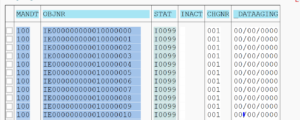This blog will explain the use of SAP security baseline template.
Questions that will be answered in this blog are:
- Where to find the SAP security baseline template?
- What does the SAP security baseline template cover?
- How can I use the SAP security baseline template?
The SAP security baseline template
Background information and the current download link to the SAP security baseline template can be found in OSS note 2253549 – The SAP Security Baseline Template. Or using following path: https://support.sap.com/sos → Media Library → SAP Security Baseline Template.
Current version is 2.5 from April 2024.
The content
The security baseline template contains a large 150 page word document from SAP covering all the topics of the SAP secure operations road map:

For each topic SAP will give must do actions, recommendations, tips and best practices.
This makes the SAP security baseline document a good document for:
- Starting security set up for a new greenfield implementation
- As as check list for existing implementations
Security baseline validation
SAP Focused run has a tool called security and baseline validation. Read more in this blog.
Security baseline updates
S4HANA has a special program to check for newly updated security baseline parameters after an upgrade. Read more on this topic in this blog.












